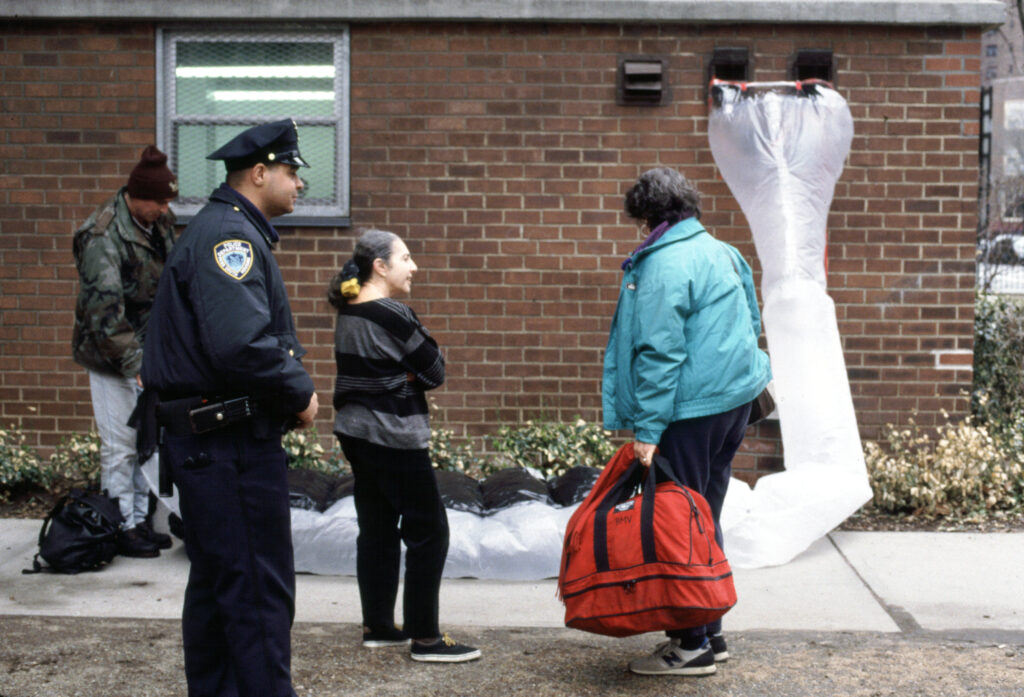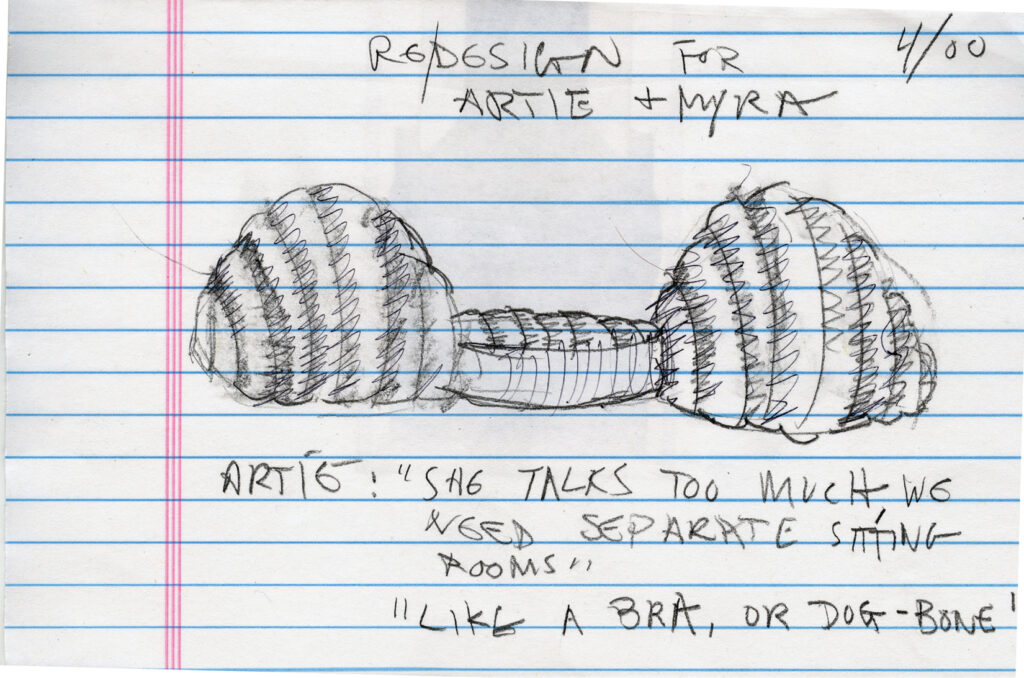| Location | New York City, Boston, Cambridge MA, Baltimore |
| Concept/Lead Architect(s)/Designers(s) | Michael Rakowitz |
| Project Architect | Michael Rakowitz |
| Year | 1998 – present |
| Major Funding | self-funded |
| Cost/Cost per unit | $5 or less in material cost |
| Sq. feet | varies |
| Additional Consultants | various homeless clients |
| Website | www.michaelrakowitz.com |
In New York City alone there are over 36,000 homeless individuals seeking refuge in shelters each night with another estimated 4,400 unsheltered on the streets. These people feed off of the city, true urban nomads, gleaning from dumpsters for food and sleeping on subway cars or steam vents for warmth. Our interaction with them is peculiar as it is generally very benign. We live in the wealthiest nation on earth yet have become complacent with the fact that so many of our citizens live in poverty. In response to this condition, artist Michael Rakowitz has been constructing paraSITEs that offer temporary shelter to homeless individuals living on the streets.
A paraSITE is an inflatable tent-like structure fabricated from plastic bags and tape (materials easily attainable on the streets). A series of interconnected hollow tubes make up the framework with an intake tube tailing at one end. For inflation the intake is connected to the exhaust duct of the “host’s” HVAC system. Finally, the exhausted warm air fills the tubes, inflating the double membrane structure and instantly providing shelter and radiant heat for the user. The shelter can then be deflated, packed away and easily transported to a new site and host.



left image: © Michael Rakowitz and Lombard-Fried Projects an urban nomad with paraSITE in hand.
above right image: Michael Rakowitz and Lombard-Fried Projects installing paraSITE to host.
bottom right image: Michael Rakowitz and Lombard-Fried Projects inflated paraSITE.
The first prototype was built in 1997 in Cambridge, MA for a homeless man named Bill Stone. Since that time Rakowitz has built several more iterations working closely with each user and forming a sort of architect/client relationship to meet the individuals personal needs. paraSITEs have popped up in New York City, Boston, Cambridge MA, and Baltimore. In fact, according to Rakowitz there are still about 10 units in use on the streets of post 9/11 NYC.
To the user a paraSITE shelter represents a refusal to surrender to the life one faces in the welfare and shelter systems, providing them with a sense of autonomy and a more self-sufficient lifestyle. For the average pedestrian, however, a paraSITE functions as an ‘agitational device,’ instigating a relationship between those who have homes and those who do not and bringing attention to the epidemic of homelessness. For Rakowitz, this is the crux of the project.


Michael Rakowitz and Lombard-Fried Projects pedestrians react to seeing a homeless man in their neighborhood gleaning the exhaust of a host building
Michael Rakowitz and Lombard-Fried Projects one of many paraSITEs on the streets serving as shelter to a homeless man


Michael Rakowitz and Lombard-Fried Projects concept sketch for dual occupancy paraSITE
Michael Rakowitz and Lombard-Fried Projects redesign with client’s notes and concerns
Currently, Rakowitz is proposing the reappropriation of public space in a new project coined (P)LOT. In its first incarnation at the Museum Moderner Kunst (MUMOK) in Vienna, Austria Rakowitz converted ordinary car covers into portable tents that were ‘parked’ on the streets. Citizens could rent the space for camping purposes in-effect reclaiming a piece of public land from the almighty automobile.
















READ OR LEAVE A COMMENT